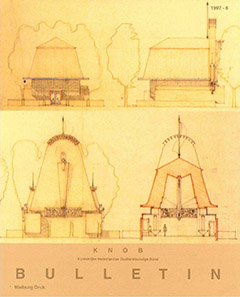Indexering ESCI / Scopus


Kasper van Ommen: 'European comes here for ideas'. De Amerikaanse reis van Jan de Bic Leuveling Tjeenk in 1912. Marie-Thérèse van Thoor: Amsterdamse School in Parijs. Het Nederlandse paviljoen op de Exposition Internationale des Arts Décoratifs et Industriels Modernes (1925). Dirk J. de Vries: Monumenten dendrochronologisch gedateerd (7). Huizen.
Following the example of architect H.P. Berlage, the Amsterdam architect Jan de Bie Leuveling Tjeenk (1885-1940) visited the United States of America in 1912, as part of a world tour. Provided with letters of recommendation from amongst others Berlage, the architect J.A. van Straaten and the Ministry of Foreign Affairs, Tjeenk was given the opportunity to get in touch with his colleagues on the other side of the world.
He found the required written information on the architectural climate in America in articles in e.g. Bouwkundig Weekblad Architectura (Architectural...
From the moment when world exhibitions were organized (1851) The Netherlands has participated in these events. The Dutch contribution thereby followed the general trend from an architectural point of view as well. Initially The Netherlands got the disposal of a small part of a large hall, which could distinguish itself from the other countries in its layout.
At the end of the nineteenth century this contribution was supplemented with a 'national-style' front in the so called Rue des Nations. For Brussels (1910) W. Kromhout designed the first independent Dutch pavilion. At the...
The dendrochronological datings now presented refer to houses with oakwood constructions, varying in age from the early 14th century to the middle of the 18th century. Because of the doctoral research of Esther Jansma (RING Amersfoort) and the application of Scandinavian Standard curves it was possible to date a number of buildings after all in 1995.
From these datings it appears that the oakwood used for various buildings in the town of Groningen must have come from Scandinavia or the Baltic Provinces. In 1571, for instance, Scandinavian pinewood and oakwood were simultaneously...


open access mogelijk gemaakt door Stichting OpenAccess
